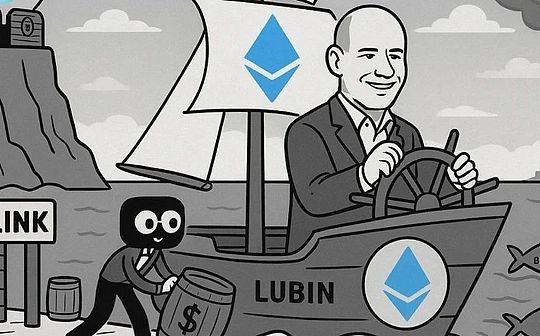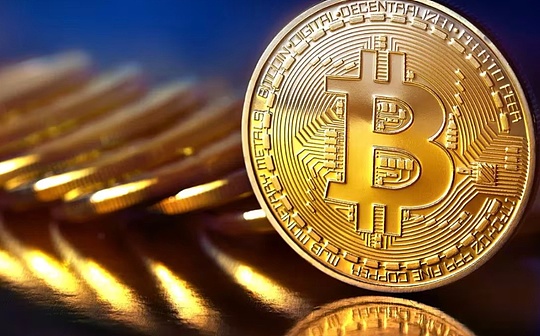SEC "Innovation Waiver" ignits DeFi engine: DeFi's leading player TVL and coin price interpret the song of ice and fire

Reprinted from chaincatcher
06/11/2025·5DAuthor:Frank , PANews
The cold winter of US regulation seems to be quietly receding, and a ray of "innovation exemption" shines into the DeFi field. On June 9, the positive signals released by the senior management of the SEC indicate that the DeFi platform may usher in a more friendly development soil.
However, under the blowing of this policy spring breeze, the DeFi market has shown an intriguing scene: on the one hand, the TVL, the leading protocol represented by Aave, has repeatedly set new highs, and the fundamental data is strong; on the other hand, the TVL of the leading DeFi protocol has weak growth, and the token price is still lower than the beginning of the year, and the market's "value discovery" seems to be still long. Although DeFi tokens have rebounded rapidly in the past two days, is it caused by short-term market sentiment or driven by deep value logic? PANews focuses on the latest developments and data performance of DeFi players and analyzes the opportunities and challenges.
SEC sends positive signals: DeFi regulation welcomes the "innovation
exemption" framework
The Securities and Exchange Commission (SEC) recently sent a significant positive signal to DeFi regulation. At the crypto roundtable "DeFi and the American Spirit" held on June 9, SEC Chairman Paul Atkins said that the basic principles of DeFi are consistent with core values such as US economic freedom and private property rights, and support self-custody of crypto assets. He stressed that blockchain technology enables financial transactions without intermediaries and that SEC should not hinder such innovations.
In addition, Chairman Atkins revealed for the first time that he has directed staff to study and develop a policy framework for "innovation exemption" for DeFi platforms. The framework aims to “quickly allow entities under the jurisdiction of SEC and non-judicial entities to bring on-chain products and services to the market”. He also made it clear that developers who build self-custodial or privacy-oriented software should not assume responsibility under the Federal Securities Act solely for publishing codes, and mentioned that the SEC's Department of Finance has clarified that PoW mining and PoS staking do not constitute securities transactions in themselves.
Member Hester Peirce, head of the SEC encryption task force, also expressed support, emphasizing that code publishers should not be held accountable for others' use of code, but also warned centralized entities not to evade supervision by using "decentralized" tags.
Against the backdrop of SEC Republican members promoting a more friendly crypto policy, these statements are regarded as major positive by the market, which once triggered a surge in the price of DeFi tokens. If the "innovation exemption" is implemented, it is expected to create a more relaxed and clear regulatory environment for the development of DeFi projects in the United States.
Data review: TVL's growth is weak, token rebounds are strong
After the meeting released the positive regulatory benefits, the quiet DeFi tokens ushered in a general rise. In particular, leading projects such as Aave, LDO, UNI, and COMP generally saw a sharp increase of 20% to 40%. But is this a flash in the pan that guides the market by simply news or the natural growth result of the DeFi industry? PANews reviewed the data of the top 20 DeFi protocols in the past six months.

Overall, the TVL volume growth of these top DeFi protocols was not obvious in the first half of 2025, and TVL of 7 protocols also declined in the first half of the year. Among the rising agreements, five of them have a growth rate of no more than 5%, which is basically the same as standing still. The fastest growing is the BUIDL launched by BlackRock. This protocol is not the same as the traditional DeFi protocol and strictly belongs to the category of RWA. Among other agreements, the growth was Aave, with TVL breaking through US$26 billion, reaching a record high and increasing by more than US$6 billion in the first half of the year. Sky-series Spark has experienced a growth of 72.97%.
Although Tron Ecosystem achieved continuous growth in stablecoins this year, its ecosystem’s leading DeFi protocol, JustLend TVL data fell by 39.82% in the first half of the year, becoming the leading protocol with the largest decline. In addition, popular agreements such as Sky, Lido, EigenLayer, and Uniswap, which have high market attention, also showed a decline to varying degrees in the first half of the year.
Token prices seem to be amplifying this downward trend. The token prices of the top 20 DeFi protocols reached 57% on average in the first half of 2025. Even with the recent market recovery and the tokens of various protocols rebounded sharply, most protocol tokens have not yet returned to the price level as of January 1, 2025. Among them, only SKY's governance token MKR rose 44.8% compared with January 1, while AAVE barely returned to a similar price on January 1. Overall, the average price of these tokens fell by 24% from January 1.
However, the token prices of these DeFi projects generally rebounded sharply, with the average rebound increase of about 95.59%. Among them, the rebound rate of several tokens such as ether.fi , Sky, Aave, EigenLayer, and Pendle are all above 150%. From the trend point of view, the recent lows of these tokens are concentrated on April 7, similar to the trend of the crypto market. But the rebound is generally better than other types of tokens. However, whether from the perspective of price rebound or the overall trend in the past six months, the trend of token prices seems to have no direct correlation with the performance of these DeFi protocol TVLs.
Aave is steady, Uni upgrade, Sky transformation, EigenLayer rises again
Among these projects, some DeFi projects deserve special attention.
Aave: As a leading project of the DeFi protocol, its data performed well in the first half of the year, breaking through historical highs many times. It has also expanded multiple public chains such as Aptos and Soneium, and currently supports 18 public chains. In addition, to boost the price of AAVE tokens, the Aave community launched a proposal called "Aavenomics", including a $1 million weekly token repurchase and revenue redistribution for Aave and native stablecoin GHO. According to the proposal, 80% of the Anti-GHO reward will be distributed to Aave stakeholders.

From the perspective of product interest rates, Aave's lending interest rates are not high, but it has a stronger depth, which has also gained the preference of many big players. On June 10, World Liberty Financial, supported by the Trump family, borrowed $7.5 million worth of USDT from Aave. Overall, in the first half of 2025, Aave achieved an upward trend in fundamentals (TVL and other data) and market performance, and is still a standard template for the development of DeFi protocols.
Uniswap: Uniswap officially launched the V4 version in 2025, technically introducing more flexible custom logic such as hooks, singleton mechanisms and significantly reducing Gas fees. In addition, Unichain's launch has further expanded Uniswap's competitiveness in the DeFi ecosystem.

Although Uniswap's TVL volume declined in the first half of the year, a closer look revealed that this decline was mainly caused by the decline in Ethereum prices. Judging from the pledge volume of ETH, it still increased compared with January. In addition, after Unichain went online, it quickly occupied a certain market and has become the second largest public chain on Uniswap in TVL. As of June 11, TVL was about US$546 million.
Sky: After changing from MakerDAO to Sky in 2024, Sky ushered in a comprehensive brand upgrade path. Although Sky's TVL began to decline after the upgrade, another protocol in the ecosystem, Spark, has also shown new potential in the RWA direction. The combined TVL volume of these two protocols will exceed US$11 billion, ranking in the top three levels. In addition, the price of its token MKR also performed well in 2025, rising from the lowest price of around $800 to $2,100, an increase of more than 170%. However, MakerDAO's upgrade plan "end battle" is obviously a relatively complex restructuring, involving everything from governance mechanisms, token economics to product portfolios, which also makes it difficult for the market to form a simple understanding of it and is not conducive to the spread of the market.

EigenLayer: EigenLayer pioneered the new concept of "restaking". Since its launch, EigenLayer's TVL has achieved explosive growth of US$12.4 billion, and has now become the third-ranked DeFi protocol. Although the concept of re-pled in 2024 began to fade after a while, EigenLayer's TVL also fell for a while, but since April, EigenLayer's TVL data has clearly entered a new growth cycle, growing from US$7 billion to US$12.4 billion in less than two months, an increase of 77%. The coat of concept is removed, and perhaps the real value of re-pending is being redefined by the market.

Lido: As a leading project in the liquidity staking field, Lido once dominated the market with stETH, and the TVL volume once reached nearly US$40 billion in 2024. However, since the second half of 2024, with the rapid growth of Ethereum L2, Lido, which is overly concentrated on the Ethereum main network (the Ethereum main network accounts for more than 99%), has shown a decline, and TVL has also declined. Its tokens are not obvious in the recent rebound, with the maximum increase of 61% from lows to June 10, far below the average of the top 20 DeFi tokens. Currently, Lido's total TVL count ranks second only to Aave, and for Lido, the scale effect is still there. Just how to quickly transform to more markets may be the top priority for maintaining a leading position.

The SEC's regulatory shift has undoubtedly injected a shot in the US DeFi market. Regulatory uncertainty that has plagued the project for a long time is expected to ease, and unresolved innovations like Uniswap fee switches may be truly implemented. The trend revealed by the data is also worth pondering: Although Ethereum is still the main carrier of TVL, the development momentum of DeFi has increasingly shown its independence and has even begun to feed back the value of the underlying public chain. As Bitwise analyst Danny Nelson said, "The DeFi ecosystem is becoming the engine of ETH rise." In the future, the clarification of regulation will attract more traditional financial capital to enter the DeFi field with lower risk preferences, bringing precious fresh blood; at the same time, the attempts of giants such as BlackRock to launch unique DeFi products not only indicate a broader integration prospect, but also means that the competition for the incremental market will be more fierce. This "end battle" started by loosening supervision may be the new starting point for DeFi to mature and deeply integrate with traditional finance.


 jinse
jinse

